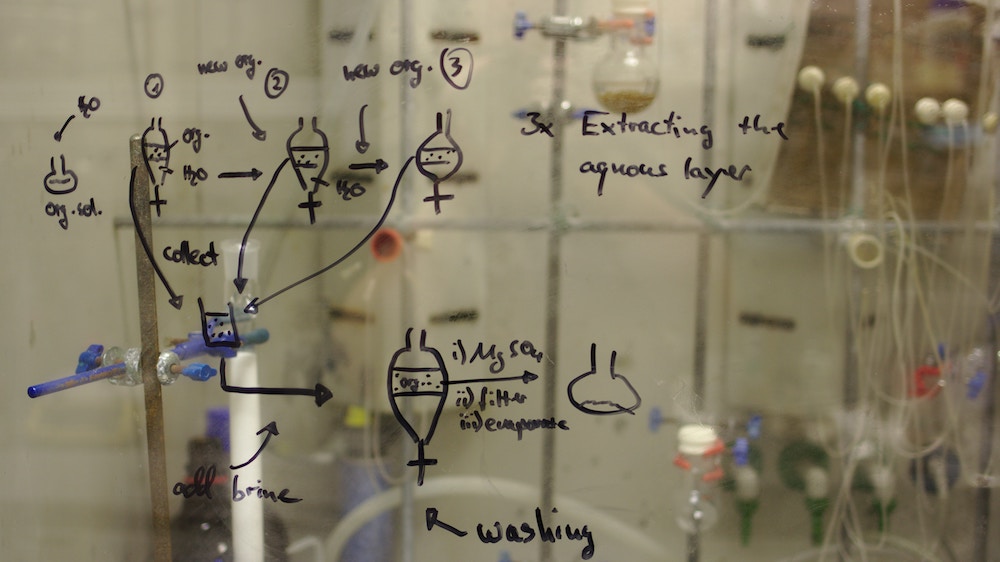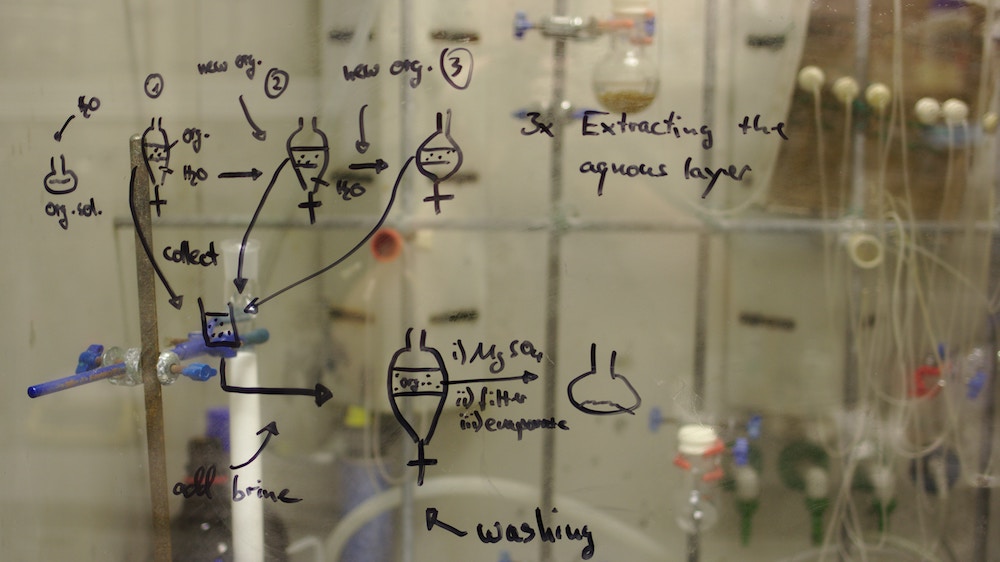
Photo by Chromatograph on Unsplash
QC Ware, along with other members of a SLAC National Accelerator Laboratory-led research consortium, has been awarded a U.S. Department of Energy grant to use quantum computing to better understand complex material and chemical systems. QC Ware is the only quantum software company included in the collaborative project. Its high level of expertise in quantum algorithms for chemical simulations is being harnessed to develop hybrid classical-quantum algorithms. These algorithms will run on quantum computers and could dramatically improve the accuracy of photochemical simulations used to design new chemicals and materials.
At the research project's core is a new methodology for performing hybrid classical-quantum photochemistry on systems with thousands of atoms that QC Ware and SLAC jointly discovered. Previously, hybrid classical-quantum methods allowed efficient photochemical simulations on systems with only a handful of atoms. The novel approach could propel significant commercial applications in chemistry, energy, and electronics.
The $4.2 million DoE grant to the SLAC-led project is part of a larger $37 million funding initiative for targeted research in materials and chemistry to advance Quantum Information Science (QIS). The emerging QIS field focuses on understanding and using the properties of quantum mechanics to improve computation, simulation, sensing, and metrology.
"The DoE grant to the collaborative project led by SLAC reinforces QC Ware's leadership in developing groundbreaking methodologies and quantum algorithms for chemical simulations," said Matt Johnson, CEO, QC Ware. "Only a few people in the world have done this. We greatly value our opportunity to make immediate contributions to this unprecedented QIS project, and look forward to the unfolding of its longer-term potential."
Photochemistry predicts the outcomes of chemical reactions induced by light. The ability to design new materials for solar cells, light-emitting diodes (LEDs), photoswitches, and photomechanical devices depends on photochemistry simulations; these simulations are currently based on inaccurate and expensive classical techniques. Use cases for quantum photochemical simulations, which will be significantly faster and more accurate, include:
"This is a significant initiative that features not only theoretical algorithm development but also practical chemical applications deployment," said Parrish. "It will drive the design of complete end-to-end workflows for hybrid classical-quantum photochemistry, which may enable increased progress in solving large-scale industry photochemistry challenges."
At the research project's core is a new methodology for performing hybrid classical-quantum photochemistry on systems with thousands of atoms that QC Ware and SLAC jointly discovered. Previously, hybrid classical-quantum methods allowed efficient photochemical simulations on systems with only a handful of atoms. The novel approach could propel significant commercial applications in chemistry, energy, and electronics.
The $4.2 million DoE grant to the SLAC-led project is part of a larger $37 million funding initiative for targeted research in materials and chemistry to advance Quantum Information Science (QIS). The emerging QIS field focuses on understanding and using the properties of quantum mechanics to improve computation, simulation, sensing, and metrology.
"The DoE grant to the collaborative project led by SLAC reinforces QC Ware's leadership in developing groundbreaking methodologies and quantum algorithms for chemical simulations," said Matt Johnson, CEO, QC Ware. "Only a few people in the world have done this. We greatly value our opportunity to make immediate contributions to this unprecedented QIS project, and look forward to the unfolding of its longer-term potential."
Photochemistry predicts the outcomes of chemical reactions induced by light. The ability to design new materials for solar cells, light-emitting diodes (LEDs), photoswitches, and photomechanical devices depends on photochemistry simulations; these simulations are currently based on inaccurate and expensive classical techniques. Use cases for quantum photochemical simulations, which will be significantly faster and more accurate, include:
- Searching for new photochemical systems that can transduce light into mechanical forces for use in sensing, control systems, and propulsion
- Exploring new materials for use in light-emitting devices such as organic LEDs for display devices and in light-harvesting devices such as organic photovoltaics
- Designing new industrial dyes with improved brilliance, color selection, and resilience
- Designing new photostabilizer molecules for many applications, ranging from protective coatings to sunscreen
- The SLAC research project involves a consortium of U.S. national laboratories and universities, as well as industry researchers, including Todd Martinez and Edward Hohenstein at SLAC, Dmitry Liakh and Alexander McCaskey at Oak Ridge National Lab, Joseph Subotnik and Abraham Nitzan at the University of Pennsylvania, and David Reichman at Columbia University.
"This is a significant initiative that features not only theoretical algorithm development but also practical chemical applications deployment," said Parrish. "It will drive the design of complete end-to-end workflows for hybrid classical-quantum photochemistry, which may enable increased progress in solving large-scale industry photochemistry challenges."




 IonQ Achieves Industry Leading Performance on Next Generation Barium Qubits
IonQ Achieves Industry Leading Performance on Next Generation Barium Qubits